At an age where most girls are just learning to clearly say their own names, run on their own two feet, play house with their bhada-kutis, starting to memorize alphabets, picking what to wear or doing something as simple as just learning to hold their own spoons, one little girl chosen as the Living Goddess has been shouldered with the responsibility of protecting the entire nation of Nepal from all misfortunes and disasters.
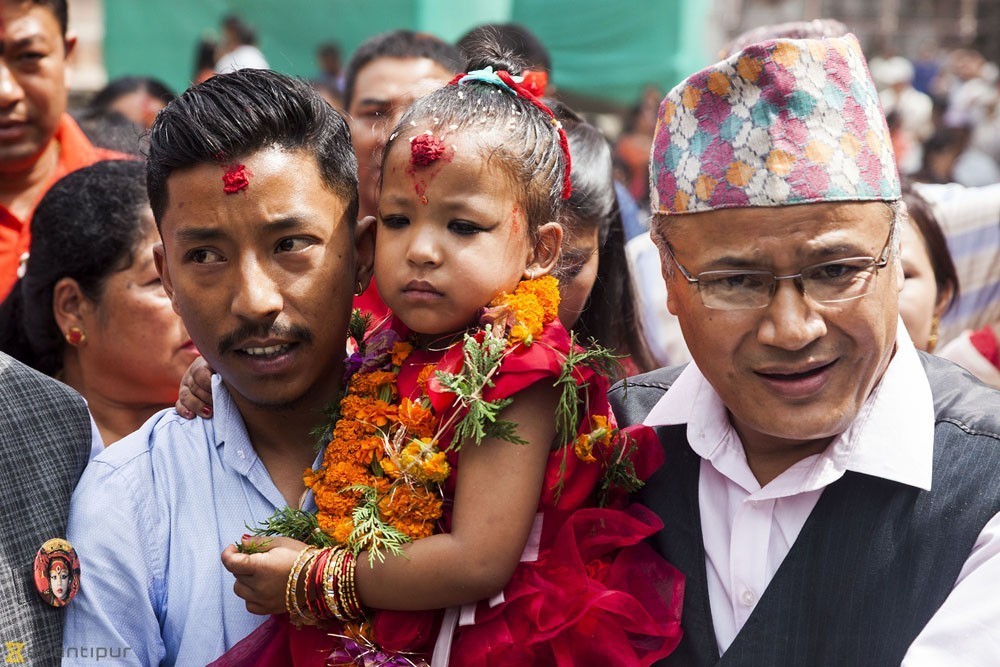
Three year old Goddess Kumari, Trishna Shakya, has replaced the twelve year old ex- Goddess, Matina Shakya, as our new Kumari this past month on the 28th of September, 2017. She has ended the reign of the retired Kumari, which was established in 2008, when she was 4 years old.
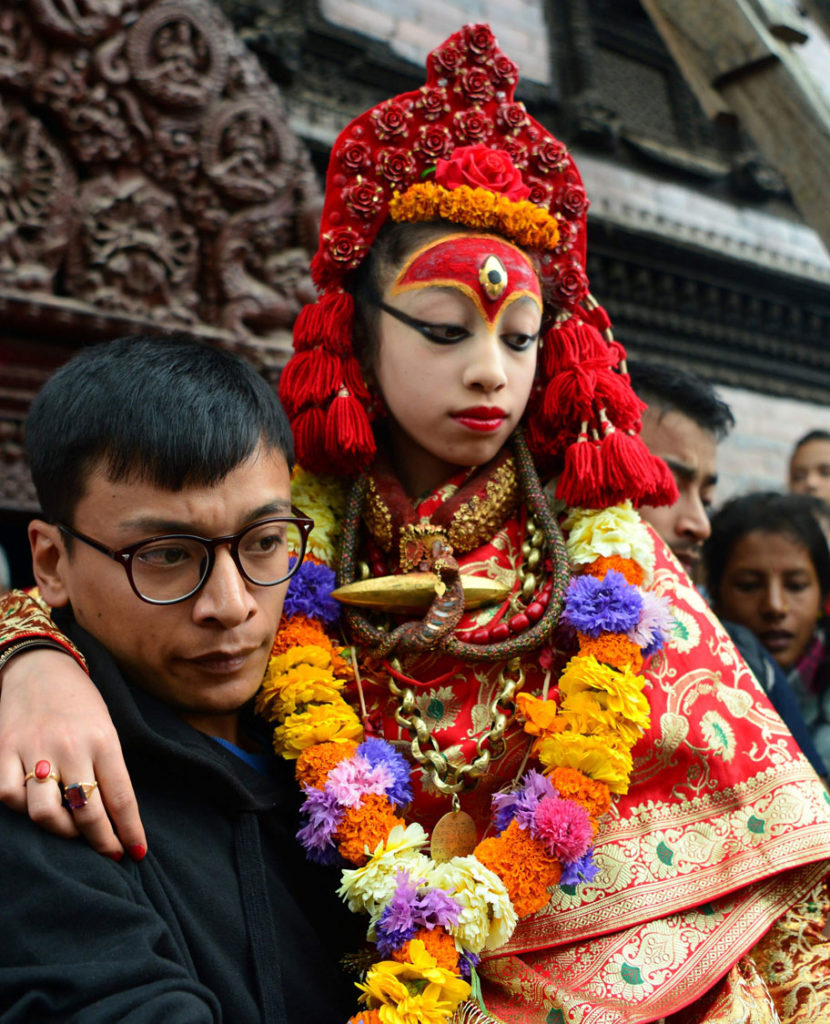
The Kumari is worshipped by both Hindus and Buddhists as a living goddess and a protector bringing good luck and prosperity. / AFP PHOTO / PRAKASH MATHEMAPRAKASH MATHEMA/AFP/Getty Images ** OUTS – ELSENT, FPG, CM – OUTS * NM, PH, VA if sourced by CT, LA or MoD **
The Royal Kumari of Nepal, who resides in the temple palace of Durbar Square, is considered the living embodiment of Goddess Taleju, a version of Durga. In order to be appointed as a Kumari, a pre-pubescent girl, usually below the age of 5, must go through a series of processes which include very fascinating criteria of selection.
When a reigning Kumari approaches her 12th birthday, the search for the new Kumari begins all around the nation. This is because the age of 12 brings about bodily changes in the Kumari, including the start of the menstruation cycle. According to traditional values, a girl who has started bleeding is considered impure and is no longer fit to serve as the embodiment of a Goddess.
The girls participating in the process to be chosen as the new Kumari must have certain bodily and astrological characteristics, which the National Community of the Newari Priests searching for the Kumari states is the minimum requirement for the body that manifests the almighty Goddess Taleju. She must have a blemish free body resembling a banyan tree, eyelashes like a cow, thighs like a deer, chest like a lion, neck like a conch shell and voice as soft and clear as a duck’s among a list of multiple other features. Her astrological horoscope must have 32 lakshina (signs of perfection) and should be similar to that of the King or the President of the nation.
After candidates with these characters are found, the final selection procession is held on the Kal Ratri or black night, which is the night of Astami, during the Hindu festival of Dashain. The fearlessness of the to-be Kumari is tested by means unimaginable to a three-year-old to be sure that she is the chosen one.
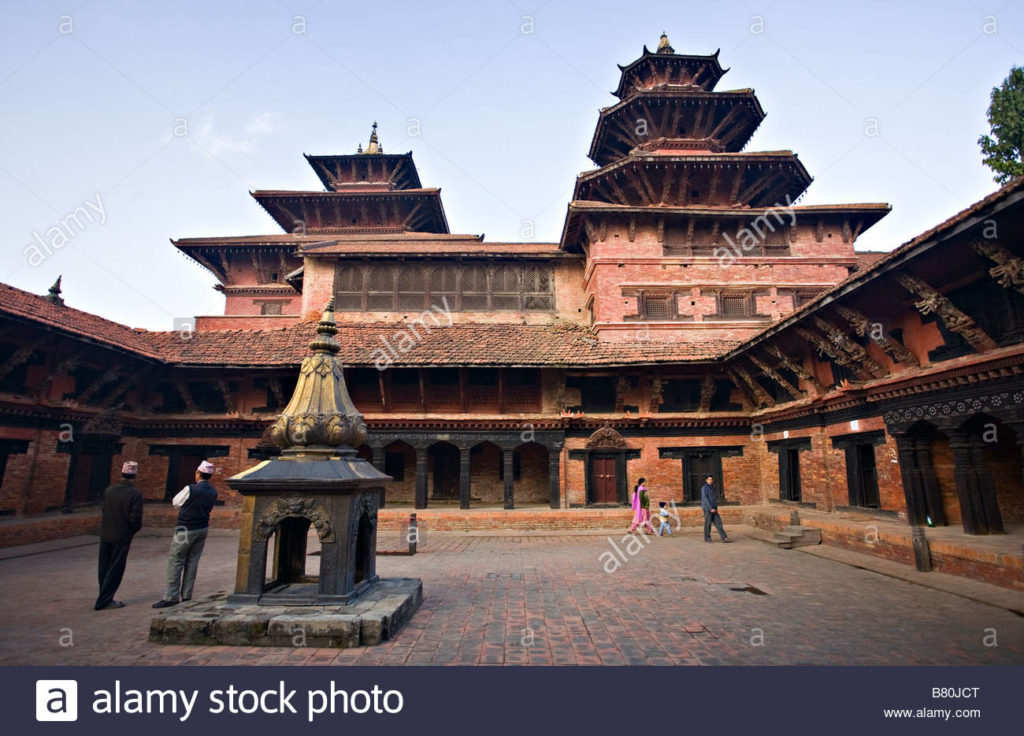
The candidates are taken to the Taleju Temple and released in the grounds among presumably 108 severed heads of buffaloes and goats offered as a sacrifice to the Goddess Kali. The heads are illuminated using candles and masked men dance around playing traditional music and drums. Next, the child is to spend a whole night among the severed heads without any company. It is only when she shows no signs of fear on her face during the process that she is deemed suitable for the next step.
The next step is a relatively simpler one where she is asked to choose the adornments of the ruling Kumari from a pile of other things.
When and after she passes all these tests, she is accepted as the new Kumari. Her body is purified using tantric rituals and she walks from the Taleju temple to the Kumari Ghar across the Durbar Square draped in white cloth. She is welcomed into the temple palace, which will be her ruling place for the period that she possesses the divinity of Goddess Taleju in her body.
As she is welcomed through the front gate, the now retired Kumari leaves her palace from the back alley, adorned with garlands and celebrated by her relatives on her successful return from her reign as the living goddess of Nepal.
The moment she steps into the Kumari Ghar, her lifestyle thereafter is bound to change drastically. As the Living Goddess of the entire nation of Nepal, there are restrictions that must be followed by her in order to preserve her ritual purity to continue serving as the Kumari. A small mistake of carelessness can lead to the loss of her throne before the destined time of retirement.
The premises of the Kumari Ghar become the boundary that a Kumari must never cross. Her foot must never touch the ground outside and she only leaves the palace 13 times a year for special occasions and rituals that require her presence. The most famous festival where she graces us with her presence is the Indra Jatra, where thousands of followers line up to catch a glimpse of the Goddess. During such festivals, she enjoys the attention of the entire nation but at most other times, she is secluded in the Kumari Ghar with a few friends selected from her own caste, who serves as her playmates.
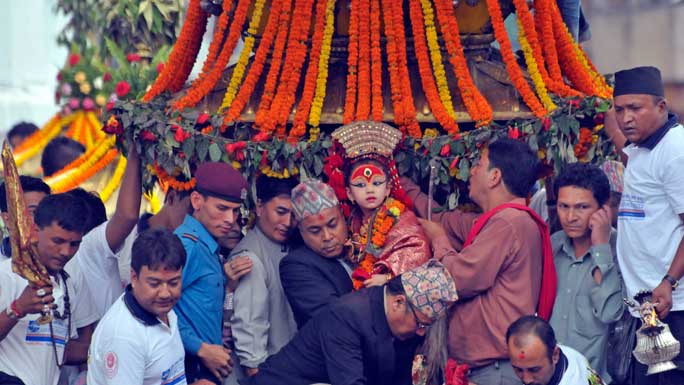

Every move and expression that the Kumari makes is studied carefully as there have been instances that state that the Kumari has the power to predict and prevent disasters and deaths using gestures such as crying, laughing or frowning. It has been mentioned that King Mahendra faced death six months after the then-Kumari refused to put Tika on him during Dashain and that three weeks before the massive 2015 earthquake of Nepal, the Kumari had broken into rashes.
The Kumari must wear red at all times and is not supposed to cover her feet with shoes. She is forbidden from eating certain foods that might disturb the balance of the body and must follow a diet deemed fit for the Goddess’s body. Since 2007, when the legislative laws regarding the educational rights of a Kumari were passed, the Kumari receives private lessons at her Kumari Ghar. However, if visitors arrive during her lessons, she must attend to them before her lessons.
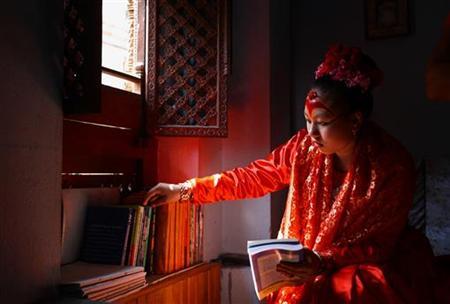
The Kumari must also keep in mind not to injure herself and try to prevent illness. The loss of blood from the body through injury or menstruation and severe illness are considered to be signs of abandonment of the body of the Kumari by the Goddess Taleju. If such instances are to happen, she must forgo her position as the Royal Kumari and step down from her throne.
All these binding rules during the period of her reign and yet the most difficult part of a Kumari life is the end of her Kumari reign. After almost a decade of being pampered as the princess of the nation, with all the attention and of course, the seclusion and isolation from the outside world to maintain her purity as the Living Goddess, it is bound to be difficult adjusting to the life of an ordinary girl who performs everyday functions normal to an average student.
Ex- Kumaris in interviews mostly talk about the struggles of going back to the mortal life from the Goddess life. A new life would start soon after their retirement and all that they have already become accustomed to since the young age of three or four is to be unlearned. New ways of functioning in the society are harder to grasp and simplest of tasks such as walking the roads or talking to others become the most daunting experiences. Not to forget, the struggle of adjusting in the new environment of the schools they attend as they further their education and try to make new friends from a pool of people who already see her in a higher light due to her former status as a Kumari. The myth of the husbands of former Kumaris facing early death due to unforeseen circumstances also hampers their ability to settle into their married life easily.
The young girls instated as the Royal Kumaris of Nepal enjoy the status at a cost that might hamper them later on in life. Yes, being chosen as the Living Goddess of the nation is a matter of great pride for the family of the Kumari, but is it the right thing for the girl herself?
Most Kumaris are appointed at an age when they can neither understand nor have the ability to decide about whether they want to spend their childhood, which undoubtedly is a very crucial period in the life of any individual, as a Goddess protecting the nation from its misfortunes. It is the time when kids make new friends, learn new things, get curious about life and start mental development into the kind of personality they will carry later on in life.
Parental guidance is very important in this stage for children to grow into successful individuals of society. When parents are guided by the faith that Kumaris must be secluded from the majority of the society to maintain her purity, the young Kumaris are bound to face difficulties when they are asked to join the society as a normal kid after years of isolation.
The tradition of Kumari has been the most celebrated in the history of Nepal and must be continued for the years to come. They depict a part of culture unique to us Nepalis and we are proud we have been able to maintain it for such a long period of time, without the interference of foreign parties.
However, the world is moving at a pace faster than ever before. People are harder to talk to, studies are harder to complete and jobs are harder to find. The competition to survive is hard enough, let alone to succeed. At such a time, is it right that the Kumari is denied the right to move freely and learn what she wants to in life? Is it right that we ask the young Kumari to forego her development as a free individual for that of the nation?
Unless changes are made in the Kumari Pratha for the upbringing of the Kumari as a Goddess that will someday return to her people as an average Nepali child, is it right for the Kumari to be the Kumari?


